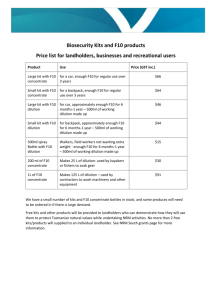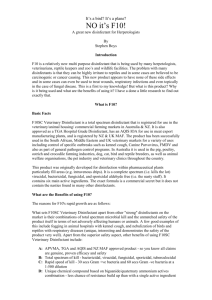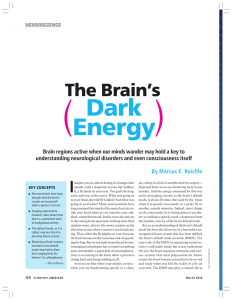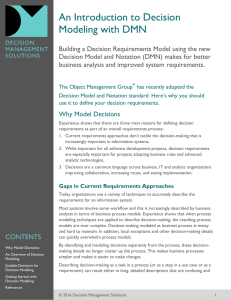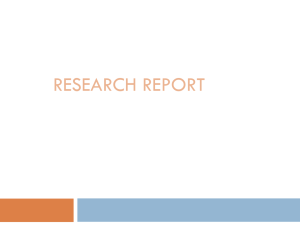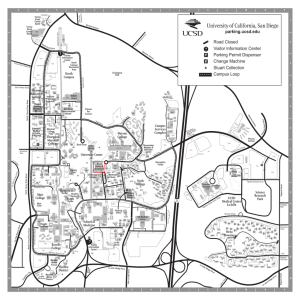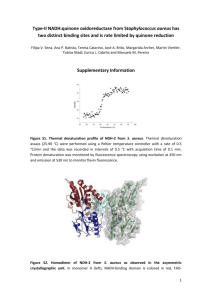F10: Fault-Tolerant Engineered Networks - Washington
advertisement
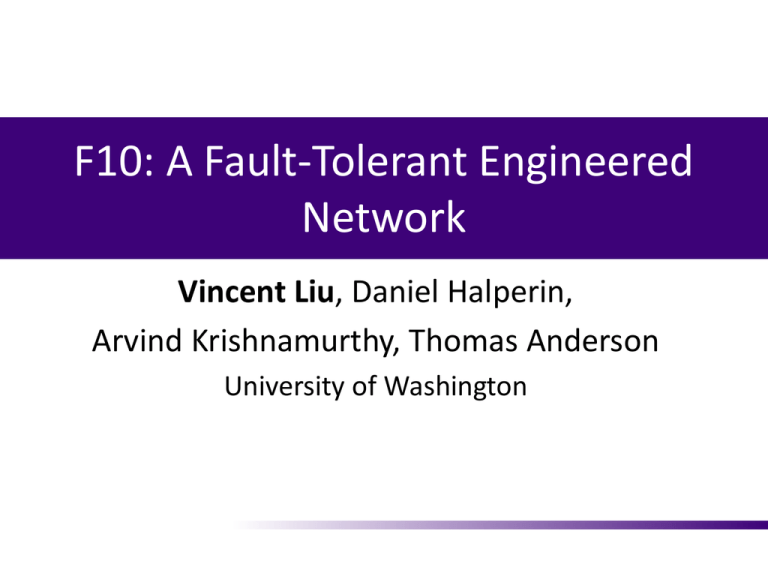
F10: A Fault-Tolerant Engineered Network Vincent Liu, Daniel Halperin, Arvind Krishnamurthy, Thomas Anderson University of Washington Today’s Data Centers *From Al-Fares et al. SIGCOMM ‘08 • Today’s data centers are built using multi-rooted trees • Commodity switches for cost, bisection bandwidth, and resilience to failures 2 FatTree Example: PortLand • Heartbeats to detect failures • Centralized controller installs updated routes • Exploits path redundancy 3 Unsolved Issues with FatTrees • Slow Detection – Commodity switches fail often – Not always sure they failed (gray/partial failures) • Slow Recovery – Failure recovery is not local – Topology does not support local reroutes • Suboptimal Flow Assignment – Failures result in an unbalanced tree – Loses load balancing properties 4 F10 • Co-design of topology, routing protocols and failure detector – Novel topology that enables local, fast recovery – Cascading protocols for optimal recovery – Fine-grained failure detector for fast detection • Same # of switches/links as FatTrees 5 Outline • • • • • • Motivation & Approach Topology: AB FatTree Cascaded Failover Protocols Failure Detection Evaluation Conclusion 6 Why is FatTree Recovery Slow? dst src • Lots of redundancy on the upward path • Immediately restore connectivity at the point of failure 7 Why is FatTree Recovery Slow? dst • No redundancy on the way down • Alternatives are many hops away src No direct path Has alternate path 8 Type A Subtree Consecutive Parents 1 2 x y 3 4 9 Type B Subtree Strided Parents 1 2 x y 3 4 10 AB FatTree 11 Alternatives in AB FatTrees dst • More nodes have alternative, direct paths • One hop away from node with an alternative src No direct path Has alternate path 12 Cascaded Failover Protocols • A local rerouting mechanism μs – Immediate restoration • A pushback notification scheme ms s – Restore direct paths • An epoch-based centralized scheduler – globally re-optimizes traffic 13 Local Rerouting u dst • Route to a sibling in an opposite-type subtree • Immediate, local rerouting around the failure 14 Local Rerouting – Multiple Failures u dst • Resilient to multiple failures, refer to paper • Increased load and path dilation 15 Pushback Notification u • Detecting switch broadcasts notification • Restores direct paths, but not finished yet No direct path Has alternate path 16 Centralized Scheduler • Related to existing work (Hedera, MicroTE) • Gather traffic matrices • Place long-lived flows based on their size • Place shorter flows with weighted ECMP 17 Outline • • • • • • Motivation & Approach Topology: AB FatTree Cascaded Failover Protocols Failure Detection Evaluation Conclusion 18 Why are Today’s Detectors Slow? • Based on loss of multiple heartbeats – Detector is separated from failure • Slow because: – Congestion – Gray failures – Don’t want to waste too many resources 19 F10 Failure Detector • Look at the link itself – Send traffic to physical neighbors when idle – Monitor incoming bit transitions and packets – Stop sending and reroute the very next packet • Can be fast because rerouting is cheap 20 Outline • • • • • • Motivation & Approach Topology: AB FatTree Cascaded Failover Protocols Failure Detection Evaluation Conclusion 21 Evaluation 1. Can F10 reroute quickly? 2. Can F10 avoid congestion loss that results from failures? 3. How much does this effect application performance? 22 Methodology • Testbed – Emulab w/ Click implementation – Used smaller packets to account for slower speed • Packet-level simulator – 24-port 10GbE switches, 3 levels – Traffic model from Benson et al. IMC 2010 – Failure model from Gill et al. SIGCOMM 2011 – Validated using testbed 23 Congestion Window F10 Can Reroute Quickly 70 60 50 40 30 20 10 0 Without Failure With Failure 0 5000 10000 15000 20000 time (ms) • F10 can recover from failures in under a millisecond • Much less time than a TCP timeout 24 1 1 0.8 0.8 0.6 0.6 0.4 0.4 0.2 0.2 0 0 CDF over Time Intervals CDF over Time Intervals F10 Can Avoid Congestion Loss 0 F10 F10 PortLand PortLand 0 0.0020.002 0.0040.004 0.0060.006 0.0080.008 0.01 0.01 Normalized Congestion Loss Loss Normalized Congestion PortLand has 7.6x the congestion loss of F10 under realistic traffic and failure conditions 25 F10 Improves App Performance 1 CDF over trials CDF over trials 1 0.8 0.6 0.4 0.2 Speedup of a MapReduce computation 0.8 0.6 0.4 0.2 0 0 0 0 0.5 0.5 1 1 1.5 1.5 2 2 2.5 2.5 3 Job completion with PortLand/F10, i.e., Speedup Job completion time withtime PortLand/F10, i.e., Speedup 3 Median speedup is 1.3x 26 Conclusion • F10 is a co-design of topology, routing protocols, and failure detector: – AB FatTrees to allow local recovery and increase path diversity – Pushback and global re-optimization restore congestion-free operation • Significant benefit to application performance on typical workloads and failure conditions • Thanks! 27
